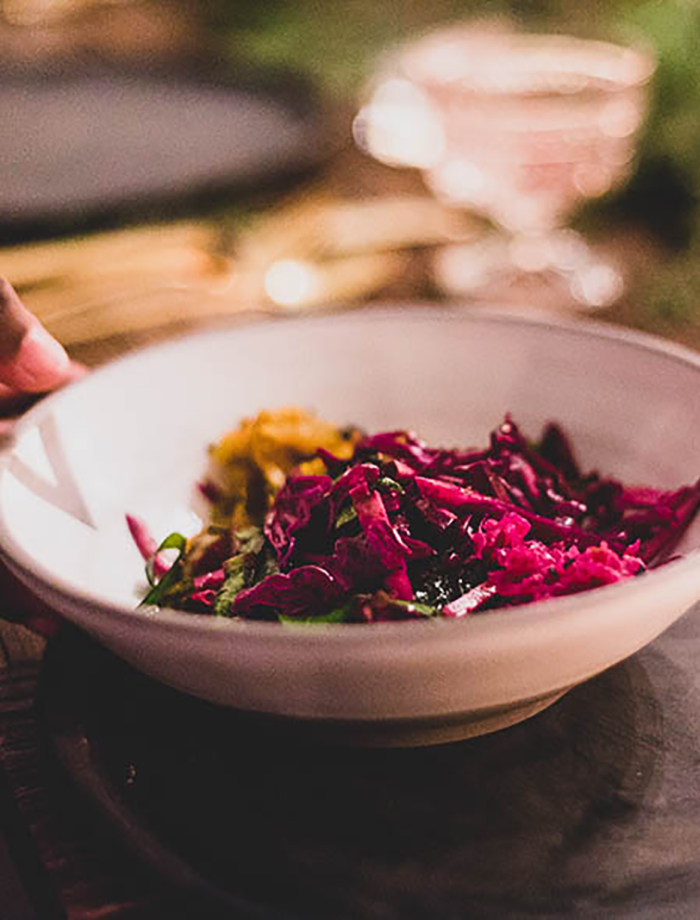Illustration by Hawnuh Lee.
If you close your eyes and imagine what a farmer looks like, what do you see? If you have the same cultural upbringing as me, you might imagine a middle-aged white man wearing denim overalls and a wide-brimmed hat with a piece of straw hanging out of the side of his mouth. It’s understandable that most of us have that particular mental image. According to the 2017 USDA Census of Agriculture, 95% of American farmers are white.
Since the beginning of the COVID-19 pandemic, there has been an explosion of curiosity around growing food. Faced with the threat of interrupted supply chains, many Americans turned to growing food at home as a step towards self-sufficiency. A spike in home gardening has occurred in other instances of crisis in modern history. During both World War I and World War II, victory gardens were popular for reducing dependency on national food supply chains and boosting morale.
Black people growing food is not some new trend. We’ve been out here all along.
This increase in interest is especially true among Black folks. According to a post in a Facebook group for Black girls with gardens, membership tripled between May and June of this year. Members share tips on how to ward off pests, where to order unique seeds, and show off their bountiful harvests. As a hobby gardener myself, this group is one of my happy places on the internet. I experiment with growing food in five-gallon containers on my apartment’s balcony. For the past few years, I have slowly been learning about the various components of gardening like starting plants from seed, the concept of companion planting, and remediating soil. The intergenerational wisdom shared in digital communities like this Facebook group make it abundantly clear that Black people growing food is not some new trend. We’ve been out here all along.
My family is originally from Nigeria, specifically the Yoruba tribe. Our ancestors held so much wisdom on tending to the earth. Pre-colonial Yoruba farmers developed a deep knowledge of plant and animal life cycles, weather patterns, herbal remedies, and cultivated sophisticated land use strategies. That agricultural wisdom was commodified and largely fragmented due to colonial tactics.
Starting in the sixteenth century, colonizers imported unpaid labor to the Americas from the African continent. These enslaved people grew cash crops including cotton, rice, and tobacco. The profits made from these monoculture crop yields throughout the colonies were the foundational building blocks of the American economy. In 1863, after over 300 years of this oppressive system, President Abraham Lincoln signed the Emancipation Proclamation granting Black Americans their humanity and freedom.
During the Civil War in 1865, a wartime proclamation ordered up to forty acres of land to be redistributed to freed Black families to reinvigorate the South’s agricultural sector. After Lincoln’s assassination, President Johnson failed to uphold the promised reparations commonly referred to as “40 acres and a mule”. Instead, this land was largely returned to white landowners. This was the beginning of the America tradition of systemic racism against Black farmers. Going forward, the United States government consistently and strategically created structures that made it difficult for free Black folks to accumulate wealth.
They organized regardless of their limited access to resources to defend their livelihoods.
In the late 1800s, many Black farmers became tenant farmers and sharecroppers. This system upheld the racist social hierarchy created through slavery. Landowning, independent farmers were typically wealthy and white. Tenant farmers were one step below them in the stratification. Black and white tenant farmers rented their land from independent farmers but ultimately were paid for their labor in cash or shares of crops. At the bottom of the heap were mostly Black sharecroppers. They were subjected to the predatory nature of crop liens. In the crop-lien system, farmers were given loans in the form of credit equal to the value of their anticipated harvests. Crop yields rarely allowed sharecroppers to pay back the loans and as a result, interest accrued at rates between 25% and 60%. This caused Black farmers to enter into vicious cycles of poverty. In my research for this piece, I learned that the practice of sharecropping existed until as recent as the 1960s meaning that Black folks my parents’ age experienced this specific brand of capitalist trash.
Black farmers even attempted to harness their collective power to circumvent racism through the formation of cooperatives and unions. These organizations acted as libraries for shared knowledge, sharing best practices, and a way to leverage collective buying power. Black Americans had to go through such extreme lengths just to have an opportunity to pursue and maintain land ownership. They organized regardless of their limited access to resources to defend their livelihoods. This is what true sustainability looks like.
In 1920, the United States Department of Agriculture counted 925,708 Black farmers. Their combined land represented about 14% of the farmland which was proportional to the size of the Black population. As of 2017, there were only 45,000. This means approximately only two percent of farms in this country are Black owned. This dramatic decline was largely caused by racist policies that intentionally withheld resources from Black farmers.
Access to nutritious food is central in the pursuit of social, racial, and environmental justice.
In 1999 Pigford v. Glickman, a class-action lawsuit against the USDA for the discrimination against Black farmers, became the largest civil rights settlement ever, redistributing around $2 billion. The suit confirms the claims of the ridiculous hoops USDA loan officers forced Black farmers through including denying equipment loans, delaying disaster relief funds, and approving significantly smaller loans than their white counterparts. This looks eerily familiar to the current governmental assistance (or rather lack thereof) to many Black owned businesses in response to COVID-19.
Increasing land access and ownership has always been high on the agenda for Black liberation. Organizers during the Civil Rights Movement demanded food justice which resulted in national policies like the Food Stamp Act of 1964. Access to nutritious food is central in the pursuit of social, racial, and environmental justice. Looking to the future, Black people across the diaspora continue to develop a deeper connection to how growing our own food allows us to heal physically, mentally, spiritually, and economically. Believing that Black lives matter means supporting opportunities for Black people to gain independence from systems that continue to systematically oppress us. Growing food while Black is a form of resistance and helps revolutionize our image of what a farmer looks like.
If you’d like to support Black farmers and gardeners, here are a few resources:
Farming While Black: Soul Fire Farm’s Practical Guide to Liberation on the Land // Grafton, New York: Read this book by author, activist, and farmer, Leah Penniman. She co-founded Soul Fire Farm and created this manual for African-heritage people ready to reclaim agency in our food system.
The Ron Finley Project // Los Angeles, California: Ron Finley, also known as the Gangsta Gardener, believes a garden can change a community. Donate to this project to support converting unused urban lots in Downtown Los Angeles into food forests and community spaces.
Future Farm Fund by Amber Tamm // New York City, New York: Amber Tamm is raising funds to acquire land to be farmed by Black and Indigenous folks and pay for consultations to understand the process of land ownership. Help her reach her fundraising goal.
Nurturing Roots // Seattle, Washington: At Nurturing Roots, the main focus is on sharing the truth about systematic oppression with an emphasis on food and environmental justice. The farm is also about access, education, and re-engaging folks with our environment. Donate to support their farming projects.
Here is a short list of Black-owned farms and food gardeners curated by Shoppe Black to find a Black-owned farm near you.





